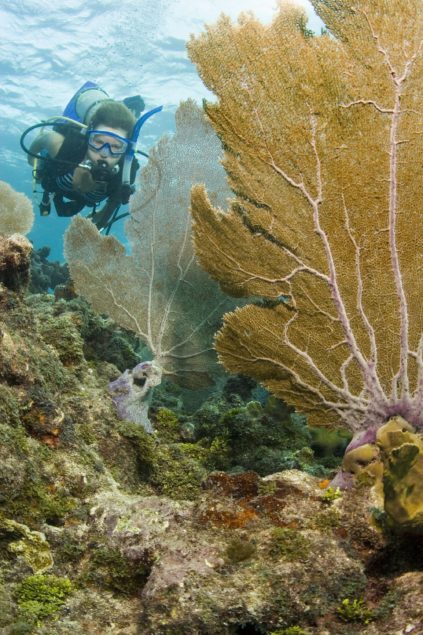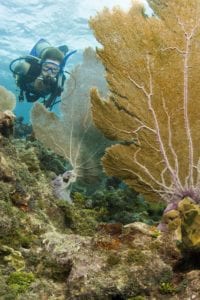

Affectionately referred to as the islands you can drive to, the Florida Keys boast an unparalleled variety of marine life, a huge number of fish species, and waters that are consistently warm and clear.
Equally important, running alongside the Keys is the only living coral barrier reef in the continental United States — which is also the third largest barrier reef in the world. It’s no wonder this crescent of islands has a reputation as one of the world’s most popular dive destinations.
On top of that, for more than a generation, conservation efforts have been focused on maintaining the Keys’ offshore environment.
Those efforts actually began in 1960, when widespread public support laid the foundation for John Pennekamp Coral Reef State Park off Key Largo. It was the first undersea park in the United States, and divers and snorkelers can thank the late Miami Herald editor John Pennekamp for helping create it.
The park celebrated its 50th anniversary in 2010 with an event highlighting its history and mission of protecting and preserving the natural resources within its boundaries — and it offers visitors numerous opportunities to observe remarkable underwater wildlife.
The indigenous population at Pennekamp is composed of countless species of fish and varieties of coral. The coral provides shelter for crabs, sea urchins, snails, lobsters, shrimp, moray eels, worms, chitons (mollusks), starfish, sea cucumbers, sand dollars, barnacles and sponges.
The undersea park’s waters flow into the Florida Keys National Marine Sanctuary, which was established in 1990 as a marine preserve. Today the sanctuary includes an amazing 2,900 square nautical miles of coastal waters all along the Keys — from northernmost Key Largo south to the pristine uninhabited islands of the Dry Tortugas.
Not only does this area surround the entire land mass of the Keys, it also includes vast stretches of Florida Bay, the Gulf of Mexico and the Atlantic Ocean. Within its boundaries lie mangrove islands, historic shipwrecks filled with rare artifacts, tropical fish and other marine life.
Divers and snorkelers from all over the world are drawn to the Keys to view the extraordinary reef ecosystem within the sanctuary.
Marine conservation efforts include the establishment of Sanctuary Preservation Areas. In these no-take zones, fish and crustacean populations can thrive and grow, fully protected from spear or surface fishing and shell collecting — making for spectacular underwater scenery among schooling fish.
What can divers spot there? Iconic blue-striped grunts are typically seen in large numbers around protective elkhorn and high-profile coral heads. Other Keys critters on hand might include glass minnows, goatfish, gray snappers, Atlantic spadefish, horse eye jacks, copper sweepers, Bermuda chubs and sergeant majors.
French and small-mouth grunts are nearly as plentiful, and yellowtail snapper (a favorite of local anglers AND diners) cruise the reef in astonishing numbers.
But that not all — by any means! It’s not unusual for divers and snorkelers to spot sea turtles, stingrays, Goliath groupers, nurse sharks or even bright green moral eels on a single bountiful trip to the reef.
The Florida Keys have a long tradition of preservation and reverence for marine life. With divers and snorkelers who are educated in reef responsibility, everyone benefits — and the coral reef can remain an unparalleled environmental treasure for generations to come.
The Florida Keys News Bureau is a division of NewmanPR, the tourism public relations agency for the Florida Keys tourism council. For more Keys travel information, go to fla-keys.com.





